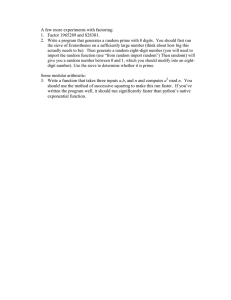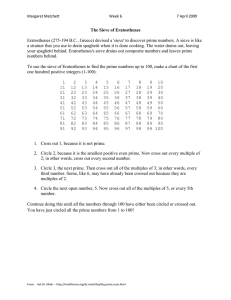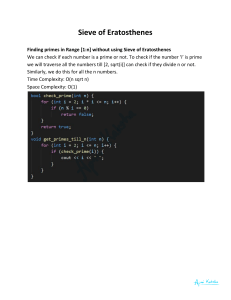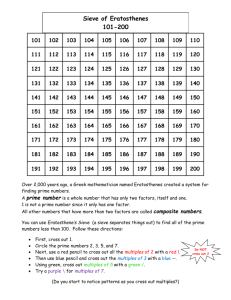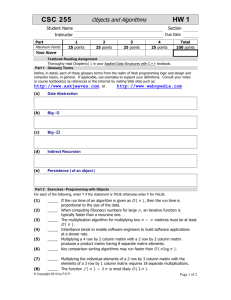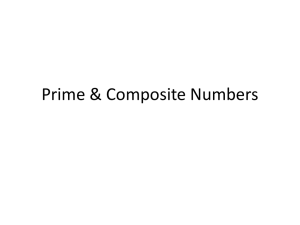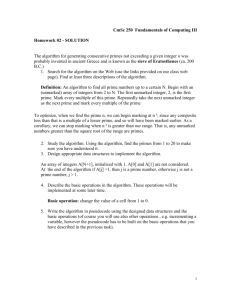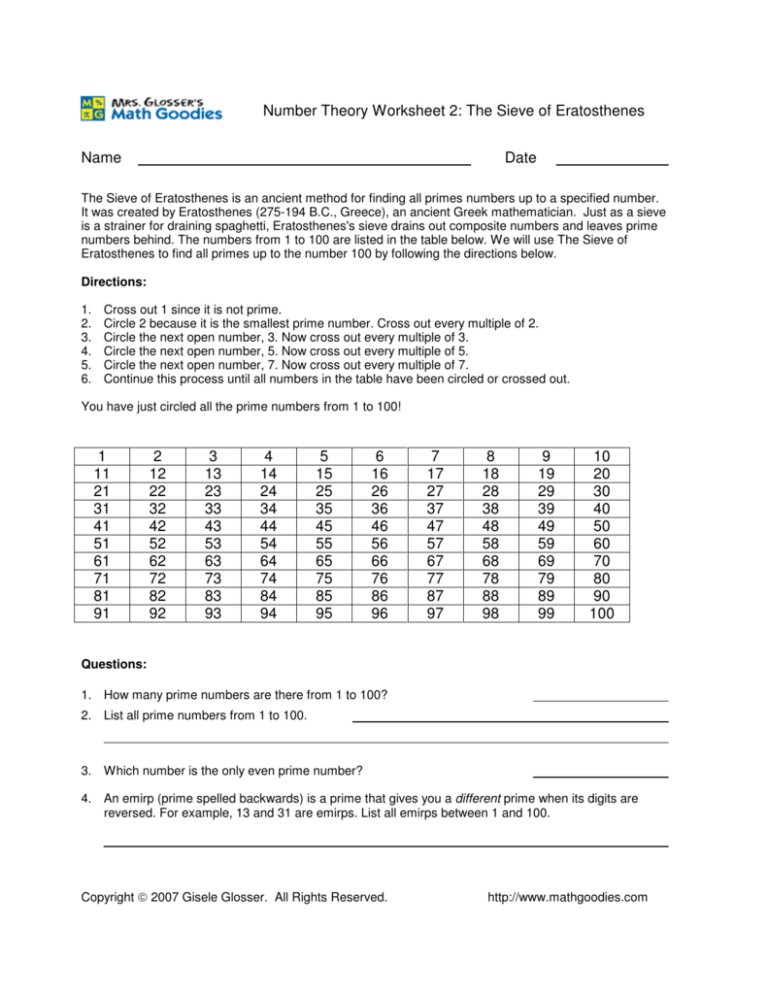
Number Theory Worksheet 2: The Sieve of Eratosthenes
Name
Date
The Sieve of Eratosthenes is an ancient method for finding all primes numbers up to a specified number.
It was created by Eratosthenes (275-194 B.C., Greece), an ancient Greek mathematician. Just as a sieve
is a strainer for draining spaghetti, Eratosthenes's sieve drains out composite numbers and leaves prime
numbers behind. The numbers from 1 to 100 are listed in the table below. We will use The Sieve of
Eratosthenes to find all primes up to the number 100 by following the directions below.
Directions:
1.
2.
3.
4.
5.
6.
Cross out 1 since it is not prime.
Circle 2 because it is the smallest prime number. Cross out every multiple of 2.
Circle the next open number, 3. Now cross out every multiple of 3.
Circle the next open number, 5. Now cross out every multiple of 5.
Circle the next open number, 7. Now cross out every multiple of 7.
Continue this process until all numbers in the table have been circled or crossed out.
You have just circled all the prime numbers from 1 to 100!
1
11
21
31
41
51
61
71
81
91
2
12
22
32
42
52
62
72
82
92
3
13
23
33
43
53
63
73
83
93
4
14
24
34
44
54
64
74
84
94
5
15
25
35
45
55
65
75
85
95
6
16
26
36
46
56
66
76
86
96
7
17
27
37
47
57
67
77
87
97
8
18
28
38
48
58
68
78
88
98
9
19
29
39
49
59
69
79
89
99
10
20
30
40
50
60
70
80
90
100
Questions:
1. How many prime numbers are there from 1 to 100?
2. List all prime numbers from 1 to 100.
3. Which number is the only even prime number?
4. An emirp (prime spelled backwards) is a prime that gives you a different prime when its digits are
reversed. For example, 13 and 31 are emirps. List all emirps between 1 and 100.
Copyright 2007 Gisele Glosser. All Rights Reserved.
http://www.mathgoodies.com

